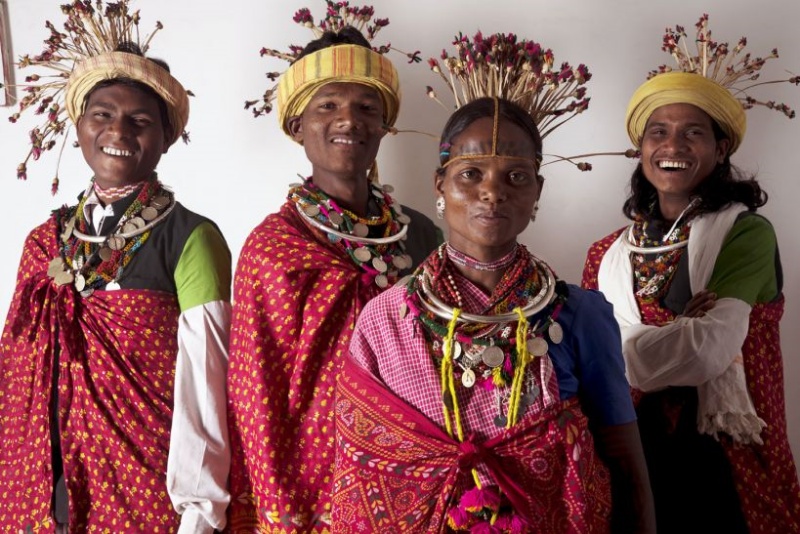The Baigas - Tribe of Madhya Pradesh
Sheopur
Tribal Tour...Baiga.
Sheopur
Are a class of priests among the Gonds. They are the people who know all about evil spirits and can avoid them by performing magical rites. In Mandla district there is a small tract called Baiga Chak, known for its Baiga settlement. The Baigas have now changed considerably.
The Pradhans are the musicians of the Gond and the Baigas. If a Baiga is not available to a Gond, a Pradhan is called for performing the rites. The Korkus are confined to a small portion in the Narmada valley. Some of them have taken to work in the coal-mines around Chhindwara.
A long time ago, legend has it that Baiga ancestors were created by God from the womb of Mother Earth. They became the keepers of the world. And, after God had finished creating the world, he offered to make them king. However, they declined because they wanted a simple life. “Give the kingship to our brothers, the Gonds”, the Baigas told God. He did so but also blessed the Baigas. “All the kingdoms of the world may fall to pieces, but he who is made of earth and is lord of the earth, shall never forsake it. You will make your living from the earth but without ploughing it, as you must protect the earth. You will never become rich because to do so would forsake the earth”. The Gonds revered the Baigas as spiritual healers and protectors, and invited them to preside as priests in their ceremonies. Yet, as per God’s blessing, the Baigas have never prospered financially.
The Savaras are mostly inhabited in Sheopur (Morena district), Isagarh, Narval (Gwalior district) and Bhilsa. This group also combines Saharia and Sour. Among other tribes are the Kols of Maikal hills who are mainly agriculturists and wage-earners in factories, the Korwas and the Oraons of Raigarh and Surguja districts, the Bharias of Patalkot and the adjoining areas in Chhindwara and the Binjhwars of Bilaspur.
The ancient Baiga tribe is indigenous to central India. Many of them can be found in the Mandla district, near Kanha National Park, in Madhya Pradesh. They live traditionally, in villages with mud huts and no electricity, completely untouched by modern development. They cook using primitive implements, cultivate and store their own rice, and brew potent toddy from the flowers of the sacred mahua tree. Throughout various phases of their life, Baiga women get tattoos on their head, arms, chest and legs, representing aspects of nature integral to the Baiga way of life.
For many Baigas, the consumption of mahua toddy has become a part of their daily routine. A way to escape. It’s a concerning indication of the troubles faced by this tribal community.
For the Baigas, India’s efforts to conserve its national parks and protect tigers has come at a huge price. For generations, they lived peacefully in the forest, in harmony with nature. However, following the establishment of the National Tiger Conservation Authority in 2005, thousands of Baigas have been forcibly evicted from Kanha National Park. The Authority wants to make the national park free of humans to maintain a safe habitat for tigers. However, ironically, it’s the Baigas that are facing quickly dwindling numbers and the threat of extinction.
The eviction from the forest has upended the Baiga tribe’s lifestyle, and left them feeling displaced and confused. The land that they’ve been relocated to is bare and unfamiliar. They are worried that their children may never learn about medicinal herbs in the forest. To earn a livelihood, some have had to become menial laborers in the area.
Source of Information is Internet, Might vary, Kindly crosscheck/reconfirm before finalizing the Tour Plan.
